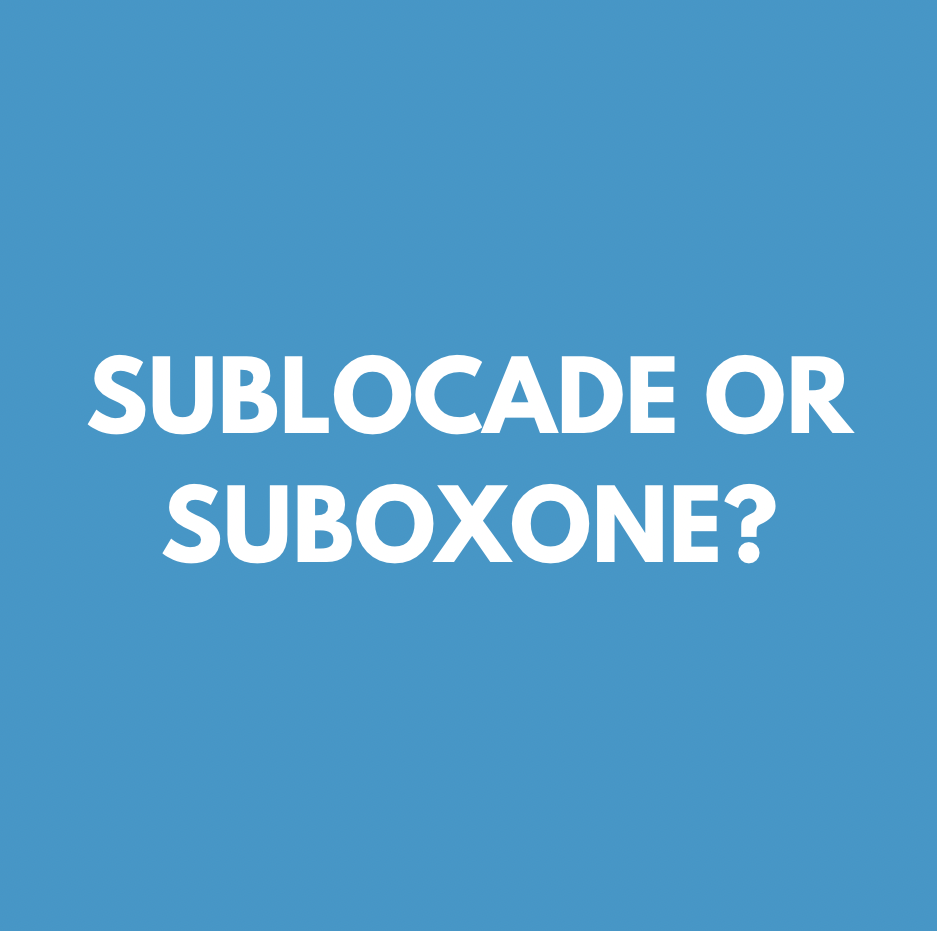Opioid Use Disorder (OUD) remains a persistent and growing challenge in public health, affecting millions of individuals and their families. The complexity of addiction, coupled with the physical and psychological toll it takes, necessitates a comprehensive and tailored approach to treatment. Medication-Assisted Treatment (MAT) has become a vital component in managing OUD, and among the most recognized and utilized options are Sublocade and Suboxone. While both medications are buprenorphine-based, they differ significantly in their administration, effectiveness, and overall patient experience. This blog provides a detailed comparison of Sublocade and Suboxone, exploring the nuances of each, and offering insights into how patients and healthcare providers can make informed decisions about their treatment plans.
Understanding the Foundations of Medication-Assisted Treatment (MAT)
Before diving into the specifics of Sublocade and Suboxone, it’s essential to understand the role of MAT in treating OUD. MAT combines medications with counseling and behavioral therapies to address the full scope of the addiction, including its physical, psychological, and social dimensions. Buprenorphine, the primary active ingredient in both Sublocade and Suboxone, is a partial opioid agonist, meaning it binds to opioid receptors in the brain but only partially activates them. This action helps alleviate withdrawal symptoms and reduce cravings without producing the euphoric high associated with full opioid agonists like heroin or prescription opioids.
MAT is particularly effective because it addresses both the neurobiological aspects of addiction and the behavioral changes necessary for long-term recovery. By stabilizing brain chemistry, MAT allows individuals to focus on rebuilding their lives, engaging in therapy, and developing the skills needed to maintain sobriety.
What is Suboxone?
The Composition and Functionality
Suboxone is a combination of buprenorphine and naloxone, delivered in a daily sublingual film or tablet. Buprenorphine serves to ease withdrawal symptoms and curb cravings, while naloxone is an opioid antagonist included to deter misuse. If Suboxone is taken as prescribed—sublingually or buccally—naloxone has little to no effect. However, if someone attempts to misuse Suboxone by injecting it, naloxone will precipitate withdrawal symptoms, thereby discouraging this method of misuse.
Administration and Dosing
Suboxone’s administration is straightforward, typically involving a once-daily dose taken sublingually (under the tongue) or buccally (against the cheek). This daily regimen can be adjusted over time, allowing healthcare providers to tailor the dosage according to the patient’s needs. For individuals just starting recovery or those in the early stages of treatment, this flexibility is crucial. It allows for a more responsive approach, ensuring that withdrawal symptoms and cravings are adequately managed.
Effectiveness of Suboxone in Treating OUD
Suboxone is well-documented as an effective MAT option for OUD. Its ability to stabilize patients, reduce cravings, and minimize withdrawal symptoms has made it a cornerstone of addiction treatment. Particularly in the early stages of recovery, Suboxone is invaluable for helping patients achieve and maintain sobriety. It allows them to stabilize their lives, engage in therapy, and work towards long-term recovery without the constant burden of cravings or the fear of withdrawal.
Benefits of Suboxone
- Flexibility in Dosing: Suboxone’s daily administration allows for precise adjustments based on the patient’s response to treatment. This flexibility is particularly important in the early stages of recovery when symptoms can fluctuate.
- Built-In Safeguard Against Misuse: The inclusion of naloxone acts as a deterrent to misuse, making Suboxone a safer option for those at risk of abusing their medication.
- Accessibility and Availability: Suboxone is widely available and can be prescribed by any certified healthcare provider, making it accessible to a broad range of patients.
- Proven Track Record: Suboxone has a well-established history of success in treating OUD, with numerous studies demonstrating its effectiveness in reducing opioid use and improving recovery outcomes.
Drawbacks of Suboxone
- Daily Dosing Requirement: The need for daily dosing can be seen as burdensome by some patients, potentially leading to issues with adherence, especially for those who struggle with the routine.
- Potential for Misuse: While the inclusion of naloxone reduces the risk of misuse, there remains a potential for abuse, particularly if the medication is not taken as prescribed.
- Stigma Associated with Daily Medication: The requirement to take medication daily can serve as a constant reminder of one’s addiction, which may contribute to stigma and affect self-esteem.
What is Sublocade?
The Composition and Functionality
Sublocade is an extended-release formulation of buprenorphine that provides continuous delivery of the medication over a month. Unlike Suboxone, Sublocade does not contain naloxone, as its subcutaneous injection method mitigates the risk of misuse. Once injected, Sublocade forms a depot under the skin, from which buprenorphine is gradually released into the bloodstream over a 28-day period. This steady, prolonged release helps maintain stable drug levels, reducing withdrawal symptoms and cravings over time.
Administration and Dosing
Sublocade is administered as a once-monthly injection, typically into the abdominal area. This administration must be performed by a healthcare provider, ensuring that patients receive their medication under supervised conditions. The extended-release nature of Sublocade simplifies the dosing regimen, as patients only need to visit their healthcare provider once a month for their injection. This can significantly reduce the burden of treatment, particularly for individuals who struggle with daily medication adherence.
Effectiveness of Sublocade in Treating OUD
Sublocade’s extended-release formulation is highly effective in managing OUD, particularly for individuals who have reached a stable phase in their recovery. The consistent delivery of buprenorphine helps to maintain stable drug levels in the body, reducing the risk of withdrawal symptoms and cravings that could lead to relapse. For patients who have stabilized on daily buprenorphine therapy and are looking for a more convenient treatment option, Sublocade offers a viable alternative that can support long-term recovery.
Benefits of Sublocade
- Improved Medication Adherence: The once-monthly dosing of Sublocade eliminates the need for daily medication, reducing the risk of missed doses and improving overall adherence to the treatment plan.
- Consistent Drug Delivery: Sublocade’s extended-release formulation provides a steady level of buprenorphine in the bloodstream, which helps to prevent the peaks and troughs associated with daily dosing. This consistency can lead to better management of withdrawal symptoms and cravings.
- Reduced Risk of Misuse: The injection-based administration of Sublocade reduces the potential for misuse, as the medication is not accessible outside of the clinical setting. This is particularly important for individuals at higher risk of medication diversion or abuse.
- Increased Convenience: For patients who find daily medication burdensome, the monthly dosing schedule of Sublocade offers significant convenience, allowing them to focus on other aspects of their recovery without the daily reminder of their treatment.
Drawbacks of Sublocade
- Lack of Flexibility: Unlike Suboxone, which allows for daily adjustments to dosing, Sublocade’s once-monthly injection schedule may not provide the same level of flexibility. Patients who require more frequent adjustments to their medication may find this limiting.
- Injection Discomfort: Sublocade requires subcutaneous injections, which some patients may find uncomfortable or anxiety-inducing. Additionally, the need for a healthcare provider to administer the injection may be inconvenient for some.
- Cost Considerations: Sublocade can be more expensive than Suboxone, and not all insurance plans may cover it. Patients should discuss the cost implications with their healthcare provider and insurance company to understand their financial responsibilities.
- Limited Accessibility: Not all treatment centers may offer Sublocade, particularly in rural or underserved areas. This limitation may restrict access for some patients who would otherwise benefit from this treatment option.
Comparing Sublocade and Suboxone: Key Considerations
Dosing and Administration
The most significant difference between Sublocade and Suboxone lies in their dosing and administration schedules. Suboxone requires daily dosing, which allows for flexibility and close monitoring by the patient and healthcare provider. This daily routine can be beneficial for patients who need a structured regimen and who may require frequent adjustments to their treatment.
Sublocade, with its once-monthly dosing, offers a different approach. The extended-release formulation ensures consistent drug levels, reducing the likelihood of withdrawal symptoms or cravings between doses. This can be particularly advantageous for patients who have reached a stable point in their recovery and are looking for a more convenient and less burdensome treatment option.
Effectiveness and Stability
Both Sublocade and Suboxone are effective in treating OUD, but their effectiveness may vary depending on the patient’s stage of recovery and individual needs. Suboxone’s daily dosing allows for quick adjustments in response to changes in the patient’s condition, making it ideal for those in the early stages of recovery. The ability to modify the dose daily ensures that the patient remains comfortable and that withdrawal symptoms are adequately managed.
Sublocade’s extended-release formulation provides consistent and stable drug levels over a month, which can enhance treatment stability and reduce the risk of relapse. For patients who have already stabilized on a daily buprenorphine regimen, transitioning to Sublocade can simplify their treatment and support long-term recovery without the need for daily medication management.
Patient Experience and Lifestyle Considerations
The patient experience with Sublocade and Suboxone can differ significantly due to their dosing schedules and administration methods. Patients on Suboxone must manage their medication daily, which can be a constant reminder of their addiction and may contribute to stigma. However, the daily routine also allows patients to feel more in control of their treatment and make adjustments as needed.
Sublocade, with its monthly dosing, offers the convenience of less frequent treatment, which can reduce the stigma associated with daily medication and allow patients to focus on other aspects of their recovery. The need for monthly injections may be a barrier for some, particularly those who are uncomfortable with needles or who have difficulty accessing a healthcare provider.
Cost, Accessibility, and Insurance Considerations
Cost and accessibility are important factors when choosing between Sublocade and Suboxone. Sublocade’s newer formulation may be more expensive and may not be covered by all insurance plans. Patients should discuss their options with their healthcare provider and insurance company to determine which medication is most affordable and accessible.
Suboxone, being more widely available and prescribed, may be the more accessible option for many patients. However, the potential for misuse and the daily dosing requirement may be drawbacks for some individuals, particularly those who have difficulty adhering to a daily regimen.
Making the Decision: Which is Right for You?
The choice between Sublocade and Suboxone should be made collaboratively between the patient and their healthcare provider, considering the individual’s specific needs, lifestyle, and stage of recovery. Both medications have proven effective in treating OUD, but they offer different advantages that may make one more suitable than the other for a particular patient.
For individuals who are in the early stages of recovery and need a flexible treatment option that can be closely monitored and adjusted, Suboxone may be the best choice. Its daily dosing allows for fine-tuning and immediate response to changes in the patient’s condition.
For those who have stabilized on daily buprenorphine therapy and are looking for a more convenient and less stigmatizing option, Sublocade may be the ideal solution. Its once-monthly dosing reduces the need for daily medication management and provides consistent, long-term stability.
Conclusion
Both Sublocade and Suboxone offer valuable tools in the fight against Opioid Use Disorder, each with its unique strengths and challenges. By understanding the differences between these medications and considering the individual needs of each patient, healthcare providers can tailor treatment plans that optimize recovery outcomes. Whether through the daily flexibility of Suboxone or the long-term stability of Sublocade, the goal remains the same: to support individuals on their journey to a life free from opioid dependence.
At Renew Health, we are committed to providing the best possible care and support for our patients. We offer both Sublocade and Suboxone as part of our comprehensive MAT program, ensuring that each patient receives the treatment that best suits their needs. If you or someone you know is struggling with opioid addiction, contact us to learn more about your treatment options and how we can help you achieve lasting recovery.


